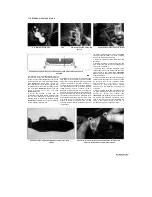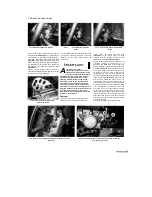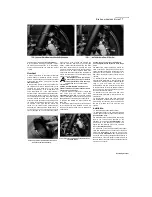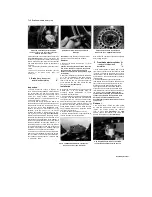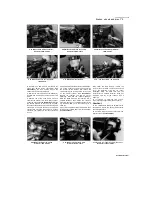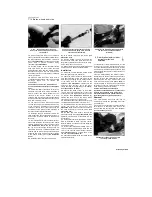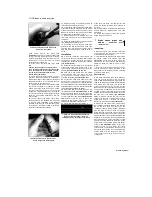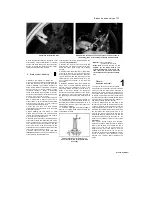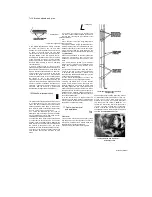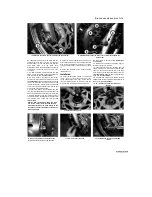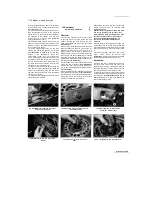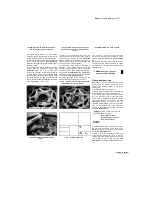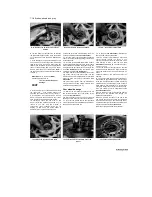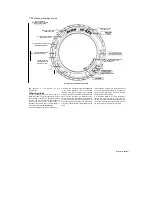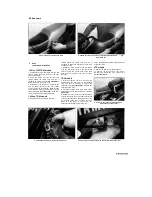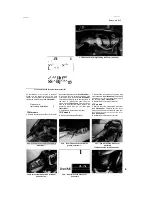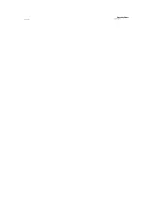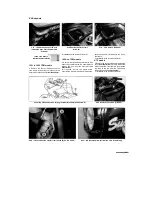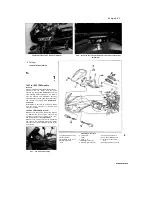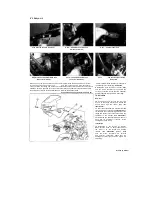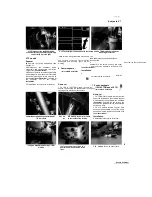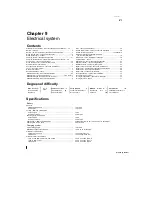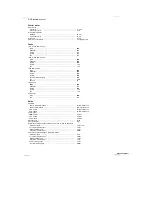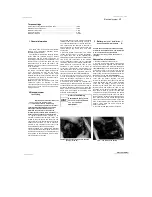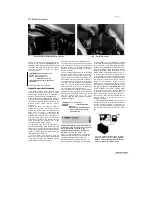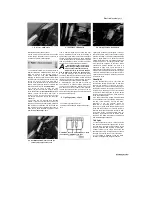
7*18 Brakes, wheels and tyres
13.10 A socket can be used to drive in the
bearing
13.12a Fit the drive plate as described .
13.12b ... then fit the retainer plate
6
Lay the wheel on its other side so that the
remaining bearing faces down. Drive the bearing
out of the wheel using the same technique as
above.
7 If the bearings are of the unsealed type or are
only sealed on one side, clean them with a high
flash-point solvent (one which won't leave any
residue) and blow them dry with compressed air
(don't let the bearings spin as you dry them).
Apply a few drops of oil to the bearing.
Note:
If
the bearing is sealed on both sides don't attempt
to clean it.
BWJJHS
Refer to Tools and
llfilhlTI
workshop Tips (Section 5)
HilUT
8 Hold the outer race of the bearing and rotate
the inner race - if the bearing doesn't turn
smoothly, has rough spots or is noisy, renew it.
9 If the bearing is good and can be re-used,
wash it in solvent once again and dry it, then
pack the bearing with lithium-based grease.
10 Thoroughly clean the hub area of the
wheel. Install the right-hand bearing into its
recess in the hub, with the marked or
sealed side facing outwards. Using the old
bearing (if new ones are being fitted), a
bearing driver or a socket large enough to
contact the outer race of the bearing, drive it in
until it's completely seated
(see illustration).
11
Turn the wheel over and install the bearing
spacer. Drive the left-hand bearing into place as
described above.
12 On 1991 to 1998 TDM and all TRX models,
fit the speedometer drive plate into the left-hand
side of the wheel, with the drive tabs facing out
and aligning the flat tabs with the cutouts in the
hub
(see illustration).
Press the retainer plate
onto the drive plate
(see illustration).
13
Apply a smear of lithium-based grease to the
lips of the seal(s), then press them into the
wheel, using a seal or bearing driver or a suitable
socket to drive it into place if necessary
(see
illustration).
14
Clean off all grease from the brake discs
using acetone or brake system cleaner then
install the wheel (see Section 11).
Rear wheel bearings
15 Remove the rear wheel (see Section 12). Lift
the sprocket coupling out of the wheel, noting
how it fits
(see illustration).
16
Set the wheel on blocks so as not to allow
the weight of the wheel to rest on the brake disc.
17 Lever out the grease seal on the right-hand
side of the wheel using a flat-bladed screwdriver,
taking care not to damage the
rim of the hub
(see illustration).
Discard the
seal as a new one should be used.
18 Using a metal rod (preferably a brass drift
punch) inserted through the centre of one
bearing, tap evenly around the inner race of the
other bearing to drive it from the hub
(see
illustrations 13.5a and b).
The bearing spacer
will also come out.
19 Lay the wheel on its other side so that the
remaining bearing faces down. Drive the bearing
out of the wheel using the same technique as
above.
20 Refer to Steps 7 to 9 above and check the
bearings.
21 Thoroughly clean the hub area of the wheel.
First install the right-hand bearing into its recess
in the hub, with the marked or sealed side facing
outwards. Using the old bearing (if new ones are
being fitted), a bearing driver or a socket large
enough to contact the outer race of the bearing,
drive it in squarely until it's completely seated
(see illustration 13.10).
22
Turn the wheel over and install the bearing
spacer. Drive the left-hand side bearing into
place as described above.
23
Apply a smear of grease to the lips of the
new grease seal, and press it into the right-hand
side of the wheel, using a seal or bearing driver,
a suitable socket or a flat piece of wood to drive it
into place if necessary
(see illustration).
24
Clean off all grease from the brake disc
13.13 Press the grease seal into place
13.15 Lift the sprocket coupling out of the
wheel
13.17 Lever out the grease seal
Staned by Stalker
for more information about
bearings.

